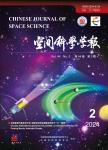Progress in Research on Materials Under Microgravity in China
Progress in Research on Materials Under Microgravity in China作者机构:Key Laboratory of Semiconductor Materials Sciences Institute of Semiconductors The Chinese Academy of Sciences Beijing 100083 China National Laboratory of Microgravity Institute of Mechanics The Chinese Academy of Sciences Beijing 100080 China Institute of Physics The Chinese Academy of Sciences Beijing 100080 China National Laboratory of Microgravity Institute of Mechanics The Chinese Academy of Sciences Beijing 100080 China Institute of Metal Research The Chinese Academy of Sciences Shenyang 110016 China Key Laboratory of Semiconductor Materials Sciences Institute of Semiconductors The Chinese Academy of Sciences Beijing 100083 China
出 版 物:《空间科学学报》 (Chinese Journal of Space Science)
年 卷 期:2004年第24卷第Z1期
页 面:138-149页
核心收录:
学科分类:08[工学] 0825[工学-航空宇航科学与技术]
主 题:Microgravity, Semiconductor, Metal, Crystal
摘 要:Research on materials under microgravity in China began in the 1980s, sparked by Prof. Lanying Lin (academician of CAS), Prof. Xiji Wang (academician of CAS), Prof. Guirong Min (academician of CAS), and Prof. Huabao Lin (academician of CAS), and others. The first semiconductor crystal, first optical crystal, and first alloys were grown in space on board a recoverable satellite in 1987. Since then, microgravity materials science became a new scientific branch in *** and technical activities on space crystal growth and solidification are carried out through two major programs: ground-based studies and orbital experiments. The main results obtained during 2001-2003 are reported below.



